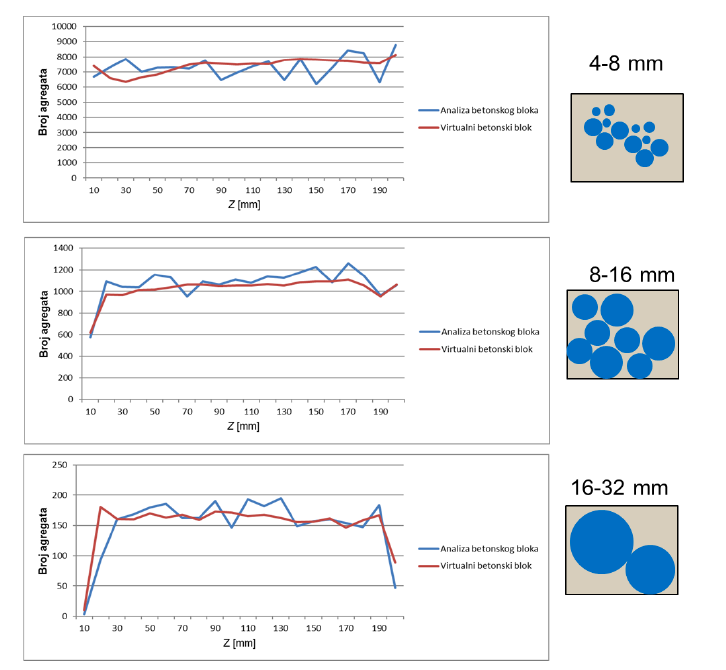To successfully conduct conceptual and embodiment phases of product development process, it is crucial to precisely define designing parameters which are often stochastic by nature (the wind, parameters caused by material heterogeneity, etc.). For that reason, as the main output of this research, methodology for determination of stochastic parameters and their representative values in the direct fastening of a nail into the heterogeneous material (concrete) was proposed. The proposed methodology consists of: analysis of aggregate distribution within a concrete block, stochastic analysis of virtual concrete and choosing representative values of the stochastic parameters (depending on their distribution). The aggregate distribution analysis starts with cutting a concrete block and scanning their sections. Scanned images are then binarized with the proposed image processing algorithms in order to obtain size and position of each aggregate. With this data, it is possible to introduce probabilities of aggregate position in the direction perpendicular to the cutting plane. With such approach, obtained 2D data was transferred into a 3D spatial distribution of aggregates which was then used for modelling of a virtual concrete block. Using the information from the virtual concrete block, Monte Carlo method has been used in order to determine a distribution of stochastic parameters. Finally, representative values were selected from the distribution of stochastic parameters and prepared as an input for further SFEM analysis. In the experimental part of this work, the complete methodology has been carried out in the industrial environment to prove its feasibility. The conducted experiment gave information about aggregate distribution with noticeable segregation of aggregates. Volume ratio of aggregates between top and bottom part of concrete (30 mm) was size dependent (0.94 for the aggregate size 4-8 mm, 0.86 for the aggregate size 8- 16 mm and 0.68 for the aggregate size 16-32 mm). The Monte Carlo analysis resulted with nail hitting small aggregate (4-8 mm) in 50.5% of cases, middle sized aggregate (8-16 mm) in 30.15% of cases and big aggregate (16-32 mm) in 19.35% of cases. Finally, 27 simulations have been defined and they will be basis for the nail design evaluation.

Nikola Horvat
2017
Rector award